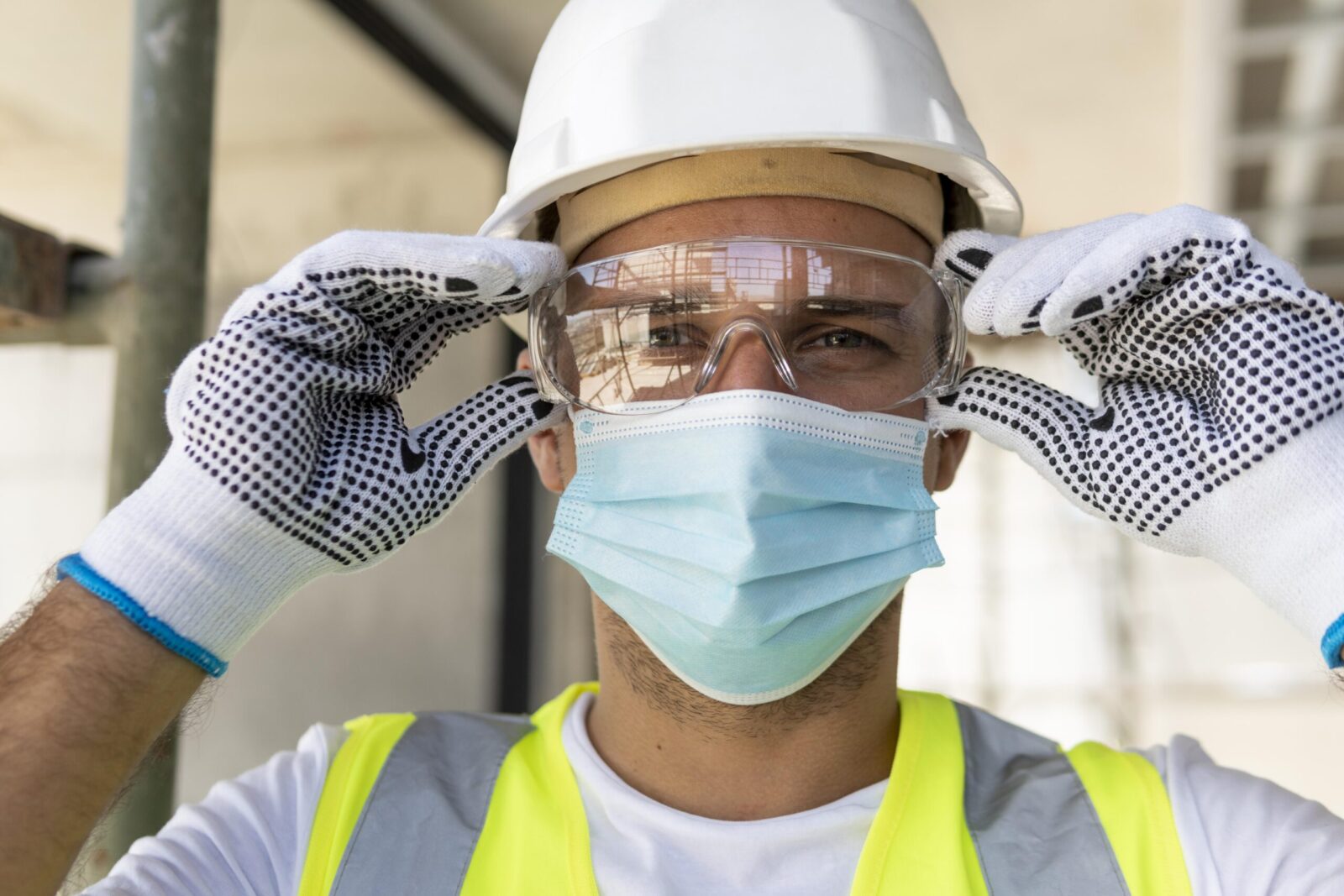
Essential PPE in the Food Industry: What You Need to Know
Overwhelmed by PPE options for food safety? Master your PPE selection for food workers safety with these practical tips.

Get 20€ off on your first order!
Construction work calls for specialized clothing that enhances productivity, boosts confidence, and ensures comfort and durability throughout the day.
This guide will provide you with everything you need to confidently choose the perfect work overalls (also known as coveralls or boiler suits) for your construction needs.
Drawing from extensive expertise and industry insights, we promise to answer all your questions about selecting the right overalls while introducing solutions for your next workwear challenges.
For a broader overview of work overalls, explore our parent article, Selecting The Best Work Overalls: A Practical Guide.
Not all work overalls are created equal. Construction overalls prioritize specific features tailored to demanding conditions. Here’s what to consider:
Construction overalls are typically made from heavy-duty fabrics like cotton, polyester blends, or specialized materials for added protection.
Choosing the right fit ensures comfort and flexibility. Overalls should allow free movement without being too loose or restrictive. Refer to sizing charts from reliable sources like this guide to get accurate measurements.
Look for features specific to construction tasks:

The type of construction work you do impacts your choice of overalls. For example:
Comfort is critical for long workdays. Look for:
Ensure your overalls meet safety standards such as EN ISO 11612 for heat resistance or EN 343 for waterproofing, providing you with assurance and confidence in their protective capabilities. Learn more about EN Standards from this guide in Wikipedia.
Getting the right size is key to comfort and functionality. Here’s a quick guide:
| Measurement Area | How to Measure | Tip |
| Chest | Measure around the widest part of your chest | Add 5 cm for layering underneath |
| Inseam | Measure from crotch to bottom of the ankle | Ensure full leg coverage |
| Waist | Measure at your natural waistline | Allow room for bending and crouching |
For additional guidance, read our sizing guide.
Your overalls are just one part of a complete workwear ensemble. Other essential items include:
Proper maintenance extends the life of your overalls. Here are some tips:
When browsing for overalls, choose trusted brands and products that cater to construction needs. Visit our Work Overalls collection to explore high-quality options.
We hope this guide has empowered you to select the perfect construction overalls tailored to your safety, comfort, and productivity needs on the job. By understanding essential factors like material, fit, and protective features, you can confidently choose overalls that enhance your work performance. Don’t forget to explore complementary workwear items like safety shoes, work jackets, and rain gear for a fully equipped and professional workwear setup.
For additional insights and product recommendations, check out our buying guides. And when you’re ready, explore our curated selection of high-quality workwear options to meet your needs today and prepare for the challenges of tomorrow.
– The Droppe Team
Yes, many manufacturers and suppliers offer customization options for construction overalls, including embroidery or screen printing of company logos, names, or other branding. This is a great way to promote a professional image and ensure easy identification of team members on-site.
Yes, hypoallergenic overalls made from natural fibers like organic cotton are available. Avoid synthetic materials that may irritate the skin, and look for labels indicating the use of non-toxic dyes or treatments.
Choose overalls with ventilation features like mesh panels, breathable fabrics, or underarm zippers. For hot climates, lightweight, moisture-wicking materials provide the best balance of protection and comfort.
Yes, several brands now offer eco-friendly overalls made from recycled materials or sustainably sourced fabrics. Look for certifications like Global Organic Textile Standard (GOTS) or bluesign® to ensure environmentally responsible production.
For confined spaces, consider overalls with a slim fit to minimize snagging hazards, and opt for lightweight, flexible materials that allow ease of movement. Ensure the overalls are flame-retardant if working in areas with potential fire risks or sparks.
Thank you! You've signed up for our newsletter.



















Overwhelmed by PPE options for food safety? Master your PPE selection for food workers safety with these practical tips.

Struggling to maintain clear vision in demanding environments? This guide is here to help. By the end, you’ll know exactly...

Electricians across Europe face unique challenges that require reliable safety glasses to ensure both protection and efficiency. Whether safeguarding against...

Overwhelmed by PPE options for food safety? Master your PPE selection for food workers safety with these practical tips.

Struggling to maintain clear vision in demanding environments? This guide is here to help. By the end, you’ll know exactly...

Electricians across Europe face unique challenges that require reliable safety glasses to ensure both protection and efficiency. Whether safeguarding against...
Get 20€ off on your first order!
Save 30% by buying directly from brands, and get an extra 10€ off orders over €100
Save 30% by buying directly form brands, and get an extra 10€ off orders over €100